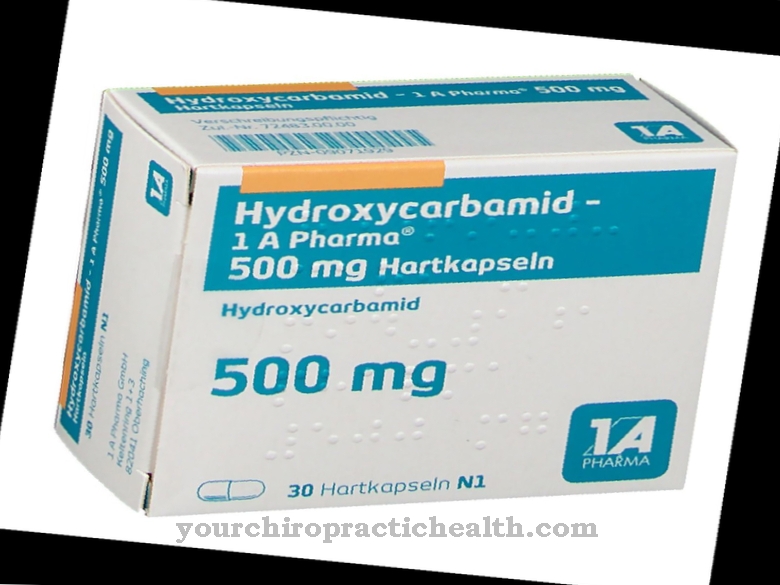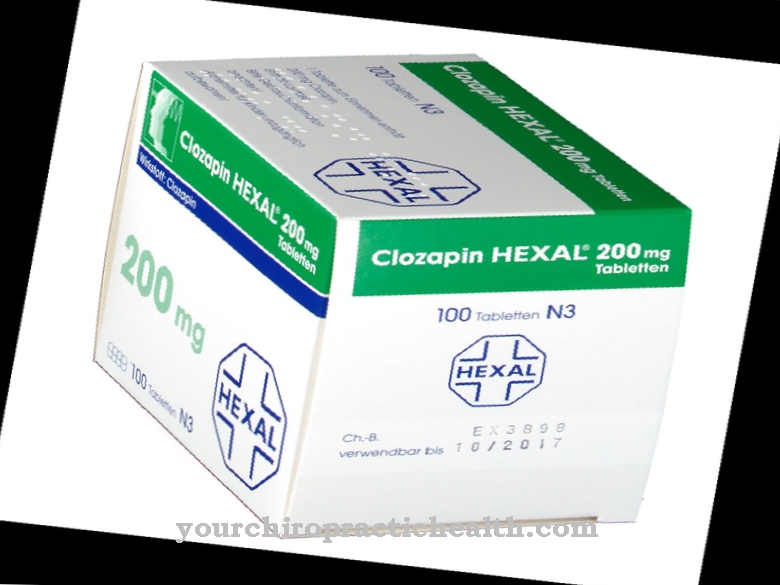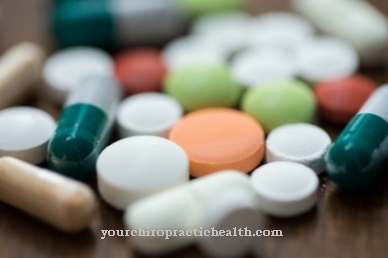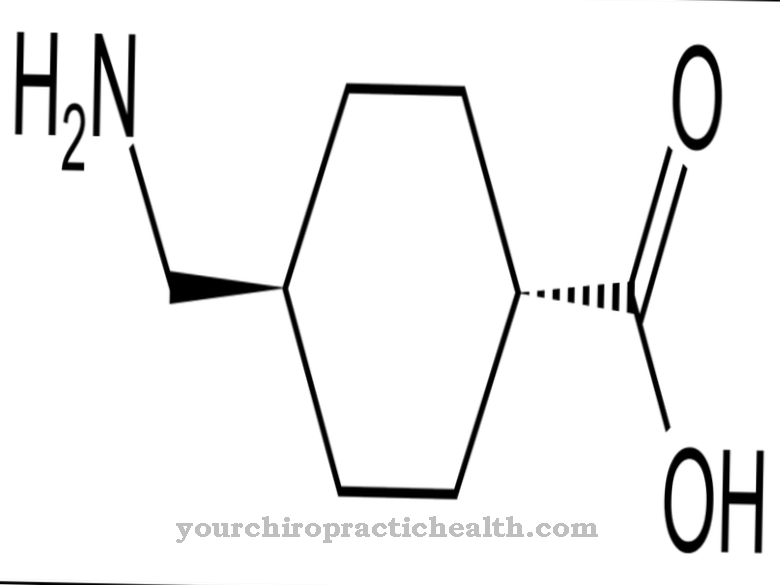lithium has been known as a very effective psychotropic drug since the middle of the 20th century. It is mainly used as a so-called phase prophylactic for bipolar and schizoaffective disorders and for unipolar depression. Since the therapeutic window is very small, a close examination of the blood count is necessary with lithium therapy in order to avoid intoxication.
What is lithium

Lithium is a chemical element that belongs to the alkali metals. In the periodic table it is marked with the symbol "Li". In addition to their use in industry, certain lithium salts have been used as phase prophylactic agents in psychiatric practice since the middle of the last century.
Phase prophylactic drugs are psychotropic drugs that are intended to prevent rapid, pathological changes in mood. Since its discovery, lithium has been a classic in the treatment of disturbed emotional states, such as those expressed in bipolar psychoses (switching between mania and depression).
It is important to mention that lithium therapy is a preventative treatment. Even if hereditary problems for unipolar depression (depression without mania), bipolar or schizoaffactive psychoses (psychoses with affective and schizophrenic elements) are known in advance, lithium cannot be administered preventively in order to prevent an initial onset of the disease.
Pharmacological effect
Although lithium has been used as a phase prophylactic for a long time and tons of specialist literature have been published about it, it is still not clear how it works in the body. Experts believe that it affects the transmission of signals between the synapses (the nerve endings in the brain that are responsible for transmitting stimuli).
One theory is that the flow of the messenger substance dopamine is restricted in the synaptic cleft. This should lead to a reduced excitability of the synapses.
Another theory suggests that lithium salts act on norepinephrine and serotonin levels. Norepinephrine and serotonin are crucial messenger substances for the emotional state. While the amount of norepinephrine is high in mania, depression can be traced back to low serotonin levels.
Some researchers suspect that the sodium-potassium current is dampened by lithium and thus the general excitability of the brain is reduced. Finally, there is evidence to suggest that the calcium concentration in the organism is reduced by lithium therapy. In the case of bipolar diseases in particular, however, a high calcium concentration can be determined.
There is also evidence for the hypothesis that lithium salts influence the GABA receptors in the brain and thus lead to a lower level of excitability. GABA receptors are a natural device used by the brain to maintain a balance between tension and relaxation.
Medical application & use
Lithium plays a significant role in psychiatric practice because it is a very effective mood stabilizer. Its discovery as a phase prophylactic agent is considered a milestone in the history of pharmacology: in the 1950s, based on animal experiments that originally had a completely different aim, it was discovered by chance that the administration of certain lithium salts had an effect on the activity of rats. Since then, lithium has established itself as a phase prophylactic for recurring depression, manias, bipolar psychoses and schizoaffective psychoses.
In unipolar depression, the chemical element is usually administered in conjunction with antidepressants. In the acute stage, mania can be contained by lithium, whereby the start-up time to the onset of action is about a week.
In bipolar psychoses, phases of the disease can often be suppressed or at least mitigated. Schizoaffective psychoses are treated pharmacologically with a combination of neuroleptics, antidepressants and lithium. In some cases, lithium is also used in therapy-resistant schizophrenia, where it is used in conjunction with neuroleptics.
According to numerous studies, lithium significantly reduces the risk of suicide in the mentally ill, with around a third of patients responding very well to the corresponding preparations, while most of the others show at least a significant improvement.
The prerequisite for the effectiveness of lithium is that the preparation is taken regularly, as it is a mirror drug. Finally, lithium is considered to be the second choice for cluster headache (pain between the eyes, forehead and temples).
You can find your medication here
➔ Medication to lighten the moodRisks & side effects
Although the effectiveness of lithium salts has been proven in psychiatric practice, although the mechanism of action is still unclear, numerous unpleasant and even dangerous side effects can occur during therapy.
It should also be noted that the therapeutic and toxic areas are close to one another. At a concentration of over one mmol / l there is a risk of poisoning, which can lead to a coma. The blood level is ideally between 0.6 and 0.8 mmol / l and should therefore be checked every three months.
Since lithium is excreted by the kidneys, regular monitoring of kidney function is also required. Lithium should not be used to treat patients with chronic or acute renal insufficiency. Therapy for heart failure is also prohibited.
Frequently occurring side effects are increased urination, increased appetite, diarrhea, vomiting, nausea and weight gain, with the extra pounds in particular affecting the compliance of many patients as they are perceived as very stressful.
If the dose is too high, it can also lead to sluggishness, apathy and indifference. In addition, it is important to ensure adequate salt intake during lithium therapy, as lithium salts flush other salts out of the organism. In the long run, this can cause the sodium level to drop dangerously low. All of this makes close monitoring of drug administration necessary. Self-medication with lithium can be life-threatening.













.jpg)

.jpg)
.jpg)











.jpg)